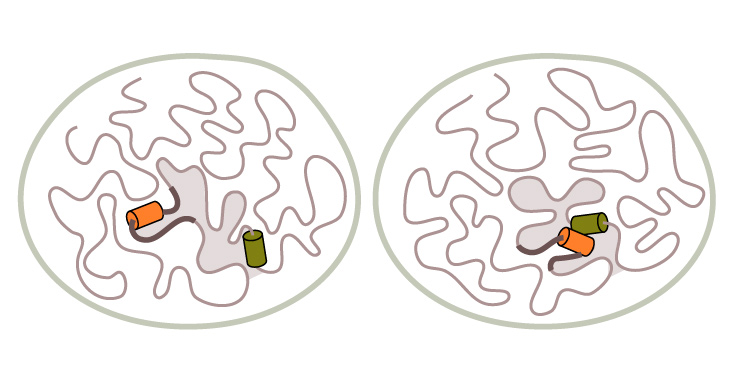Division Partners with 2 Other Campus Units on $8.6-Million NIH Grant
October 6, 2015
By Kim McDonald

Yaojun Zhang and Olga Dudko, UC San Diego
Biology Professor Cornelis Murre and two other UC San Diego faculty members have been awarded $8.6 million from the National Institutes of Health to establish a new campus center to unravel the geometry of the genome, precisely track its motion and generate predictive models of how the structure and dynamics govern mammalian genetics.
Bing Ren, a professor of cellular and molecular medicine, and Olga Dudko , associate professor of physics, together with Murre, will receive the funds from the agency over the next five years to establish the new center, one of six Nuclear Organization and Function Investigation Centers within the NIH center effort, which is called the 4D Nucleome project.
Mapping the three dimensional structure of the genetic material within the nucleus and tracking changes to the arrangement over time—the fourth dimension—are the goals of the 4D Nucleome project.
The$8.6-million grant is one of three grants to UC San Diego from the NIH Common Fund program. In total, the campus has obtained more than a quarter of the $120 million allocated to the 4D Nucleome project nationwide.
Murre studies the exquisite timing of the system that allows hundreds of genes to be regulated in synchrony. He has invented a way to tag specific individual elements of DNA and precisely track their motion in living cells, opening up the possibility to study how DNA elements that regulate genes are finding each other in space. The issue of timing has been little explored, Murre said.
Human DNA if stretched out would measure two meters long. Inside a cell nucleus just six micrometers wide it coils around proteins to form chromatin, which itself forms loops and bundles that aren’t random. Instead the architecture can bring together distant regulatory elements on the string of genetic code to activate or silence specific genes. The pattern of which genes are active varies with the type and state of cells; disruptions of the pattern can lead to disease. More on the UC San Diego effort is available at the UC San Diego News Center.
